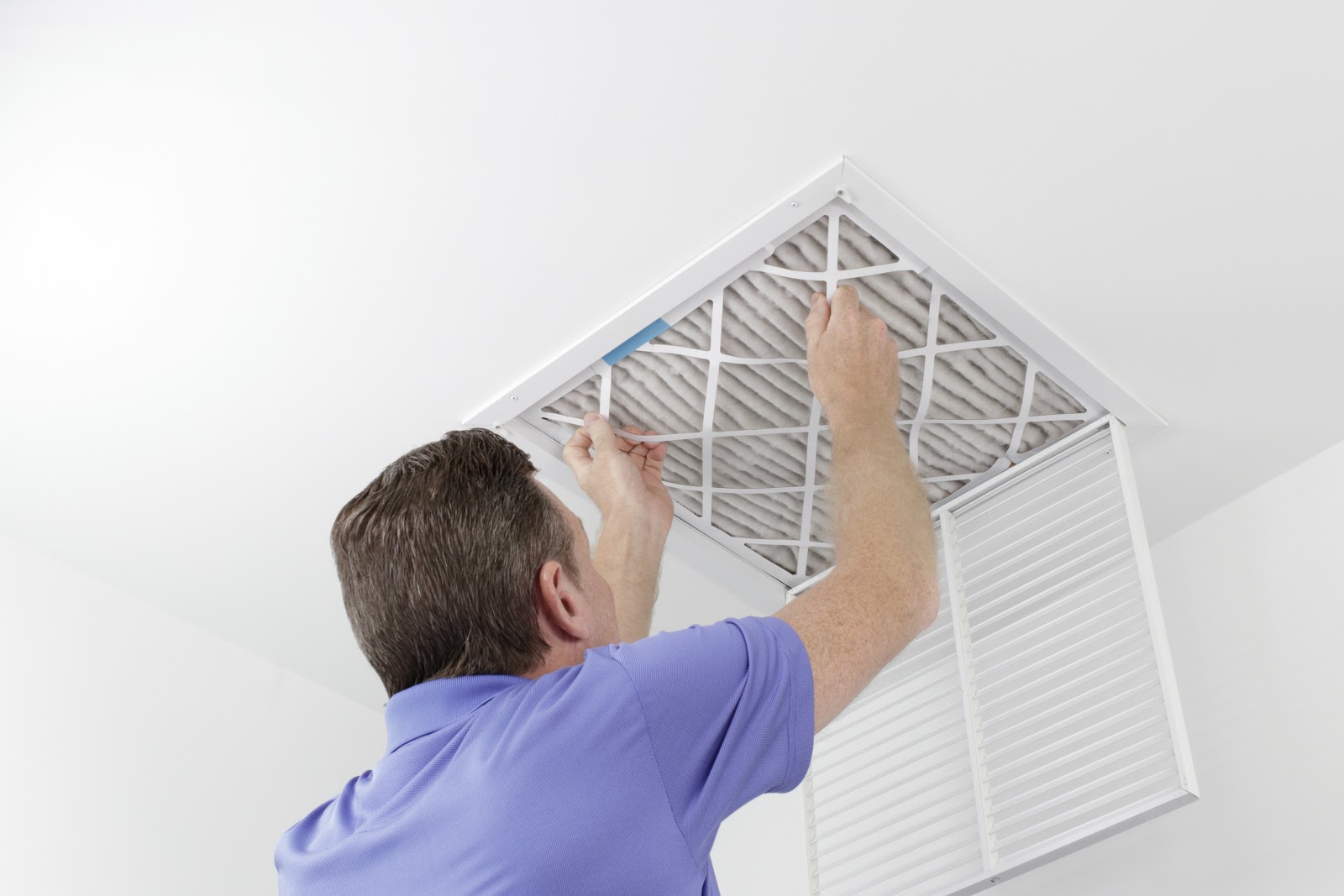HVAC Basics: What is an HVAC System?

HVAC stands for heating, ventilation, and air conditioning—and your HVAC system is what keeps your home warm during the colder seasons and cool during the hotter seasons. A well-functioning HVAC system is crucial to your family’s comfort. If you’re curious about your HVAC system and how it works, keep reading to learn more about the HVAC basics and the different systems available.
HVAC 101: What is an HVAC System?
To be an informed homeowner, it’s essential to know about the various components that make up your HVAC system. At its most basic level, an HVAC system has a furnace (or boiler) for heating, an air conditioning unit for cooling, as well as ductwork, and a fan. The vents and ventilation system which move the heated or cooled air have filters to remove air contaminants. The thermostat controls when the system is on or off. In some cases, the thermostat can be automated, allowing you to set specific temperatures at different times throughout the day to help maximize your home’s energy efficiency.
Beyond those HVAC basics, there are also specialized parts of your HVAC system that each serve an important role in keeping your home at a comfortable temperature.
HVAC System Components
Air Handling Unit
The air handling unit is used to both condition and circulate the air. Its main function is to take in outside air, re-condition it, and supply fresh air to your home. Air handling units are typically metal boxes that hold the motorized blower, heating or cooling components, filter racks or chambers, and dampers. Usually, this component connects to a ductwork ventilator system that distributes the conditioned air through the home and returns it.
Evaporator Coil
The evaporator coil is an essential part of your air conditioner or heat pump that’s attached to the furnace or located inside your system’s indoor air handler.
The furnace blower transports air across the evaporator coil. During this process, the air is chilled as it comes into contact with the cold coil, and heat transfers from the air to the refrigerant.
Filter
A filter helps remove contaminants and impurities from the air that passes through it. It’s important to regularly check your HVAC filters as a basic home maintenance task.
For homeowners in California especially those who live in wildfire-prone areas, there are certain air filters designed to purify the air. The most effective against smoke are HEPA filters, which use a fan to force air through a fine mesh that traps tiny particles. Ranging from $500 to $1,000, HEPA filters can reduce particle concentrations by up to 85 percent, according to the EPA.
Blower
The motorized blower is what helps move the air through the HVAC system, specifically through the ductwork and out through the vents.
Compressor or Condenser Coil
Your condenser coil or compressor makes up part of your air conditioner or heat pump. In most cases, it’s installed outside of your home. A condenser works to cool off your house by releasing interior heat into the outside environment.
This happens when the coil compresses and condenses refrigerant from a warm gas to a cold liquid. Simultaneously, a fan blows air over the compressor to break up the heat and cool the refrigerant more quickly. At this point, the HVAC system transports the liquid refrigerant through the aluminum or copper line or tube to your evaporator coil.
Refrigerant Tubing
Refrigerant tubes connect the evaporator coil with the condenser coil. The tubes hold cooling refrigerant under a range of temperatures.
The refrigerant tubes also connect your indoor and outdoor HVAC units.
Ductwork
The ductwork of your HVAC system is what transfers and pushes air throughout your home’s interior. Air enters the HVAC system through certain parts of the ductwork and then it’s distributed out to rooms through other sections through supply and return vents.
Clean ductwork is also necessary for optimal indoor air quality. When your HVAC turns on, any debris lurking in your ducts will blow into and contaminate your living areas. Your ductwork must also be properly sealed to prevent cool and warm air from seeping out before reaching its destination.
Air Supply and Return Ducts
Supply vents are connected to your air supply ducts in your HVAC system. These specialized vents blow conditioned air into your interior spaces. They are usually smaller in size compared to return vents. You can tell which vents are supply vents by putting a piece of paper up to a vent while the system is on. If air comes out and blows against the paper, then it’s a supply vent.
Air return vents are connected to your return ducts and draw air from your home’s interior. The air is then transferred to the heating and cooling system. Return vents are usually much larger than supply vents.
You can tell whether or not a vent is a return vent if you feel a suction effect when you put your hand up to it.
Pro-Tip: Never block your return or supply vents because it can disrupt the balance of your entire HVAC system.

Types of HVAC Systems
Choosing the right HVAC system can be daunting, as there are a number of systems on the market, featuring an array of characteristics. Think about your desired level of energy efficiency, how much humidity control you’ll need, the age of your house, what your budget is for installation and operation, and so on.
If high initial costs are a deterrent, most energy-efficient HVAC systems qualify for PACE financing. An assessment on your property, PACE enables homeowners to finance energy-saving upgrades and improvements, and then pay for them over time through their annual property tax bills.
Learn about the various HVAC systems and their different features below.
Standard Split Systems
Split systems refer to HVAC systems where one component is outside and one is inside. It’s the most popular type of residential HVAC system available. They can be configured into a furnace and air conditioning system, an air handler and heat pump system, or a furnace and heat pump system.
Split systems boast the biggest range of options and the most flexibility for homeowners. They’re also the most affordable type of HVAC system in most cases, especially if you need a replacement system.
Ductless Mini-Split Systems
Ductless split systems consist of an outside air conditioner for cooling only or a heat pump for cooling and heating. Furnaces cannot be used in this type of HVAC system.
The indoor component of a ductless split system has a fan for circulating treated air and can be installed on walls, ceiling, or flooring. These types of systems are great for homes without existing ductwork. Unfortunately, ductless mini-split systems don’t work well in very cold climates and don’t offer homeowners as many options as standard split systems.
Packaged Systems
A packaged system is what it sounds like: it’s an HVAC system with all the major parts included in one cabinet. These all-in-one systems are popular in homes that don’t have basements and they’re always installed outdoors.
All packaged systems use a blower to send treated air into the home and to draw out untreated air into the system. The way the system treats the air depends on the type of unit:
- Hybrid: A heat pump is used for all heating and cooling and a gas furnace is used for heating if the temperatures fall below freezing.
- Heat pump: The unit both heats and cools.
- Gas/Electric: This unit has both a furnace and an air conditioner.

Single or Multi-Stage
Single-stage heating and cooling systems are typically found in smaller, older homes. These systems are designed to provide comfort to those who reside in areas with milder climates. They can be described as systems that are on-off — they either blow hot or cold air, running at full capacity, or they’re turned off.
Multi-stage heating and cooling have a low or high setting and are typically more energy efficient. These types of systems are more common in bigger and newer homes. They heat or cool a home more gradually and offer homeowners larger energy savings.
Zoned Systems
Zoned HVAC systems can heat or cool specific areas of your home’s interior through a series of valves and dampers located inside the ductwork and vents. Because you’re only heating one or a few areas of your home instead of your entire home, these systems can save both money and energy.
Humidity Control
Both humidifiers and dehumidifiers can be added as options to heating and cooling systems. But you only have to consider adding these options if you live in a humid or extra arid environment. If your system has humidity controls, you can automatically adjust the humidity to your liking. It’s important to note that humidity controls are not available through forced-water heating systems that utilize boilers.
Alternative Heating Systems
Besides traditional furnaces and boilers, there are also a variety of alternative heating systems to explore. Geothermal HVAC systems, for instance, use the temperatures of the earth for heating and cooling. You may also want to consider using a biofuel heater if you’re interested in incorporating a greener heating system.
Although a greener HVAC system that uses biofuels or geothermal energy can deliver serious energy savings to homeowners, these systems often require a larger initial investment to build out or retrofit the system. If you’re considering installing a greener HVAC system but need help paying for it, check out Ygrene’s eligible home improvement project list for more information on what’s covered by PACE financing.
Takeaways: Keeping Your Home Comfortable with Your HVAC System
Basic maintenance tasks like changing out your filters are straightforward and help keep your HVAC system running efficiently. But if your system is aging and you’re dealing with constant issues, it might be time to upgrade to an energy-efficient water heater or a completely new HVAC system.
Concerned about affordability? Ygrene’s PACE financing can help. A new, more efficient HVAC system can keep your home’s interior at a consistent, comfortable temperature. Plus, an energy-efficient system can potentially save you money on your utility bills. Learn more about PACE financing and see if your property qualifies.




